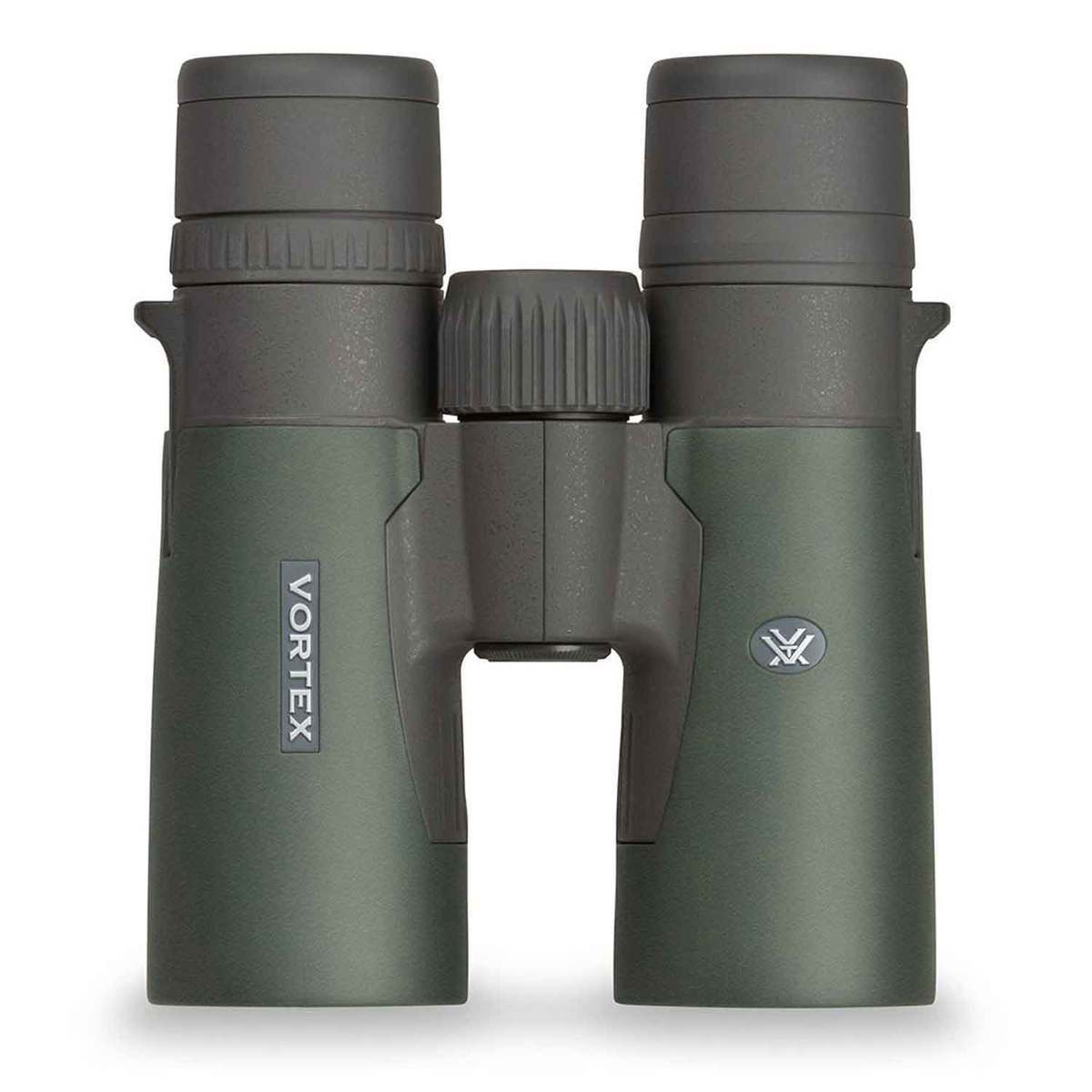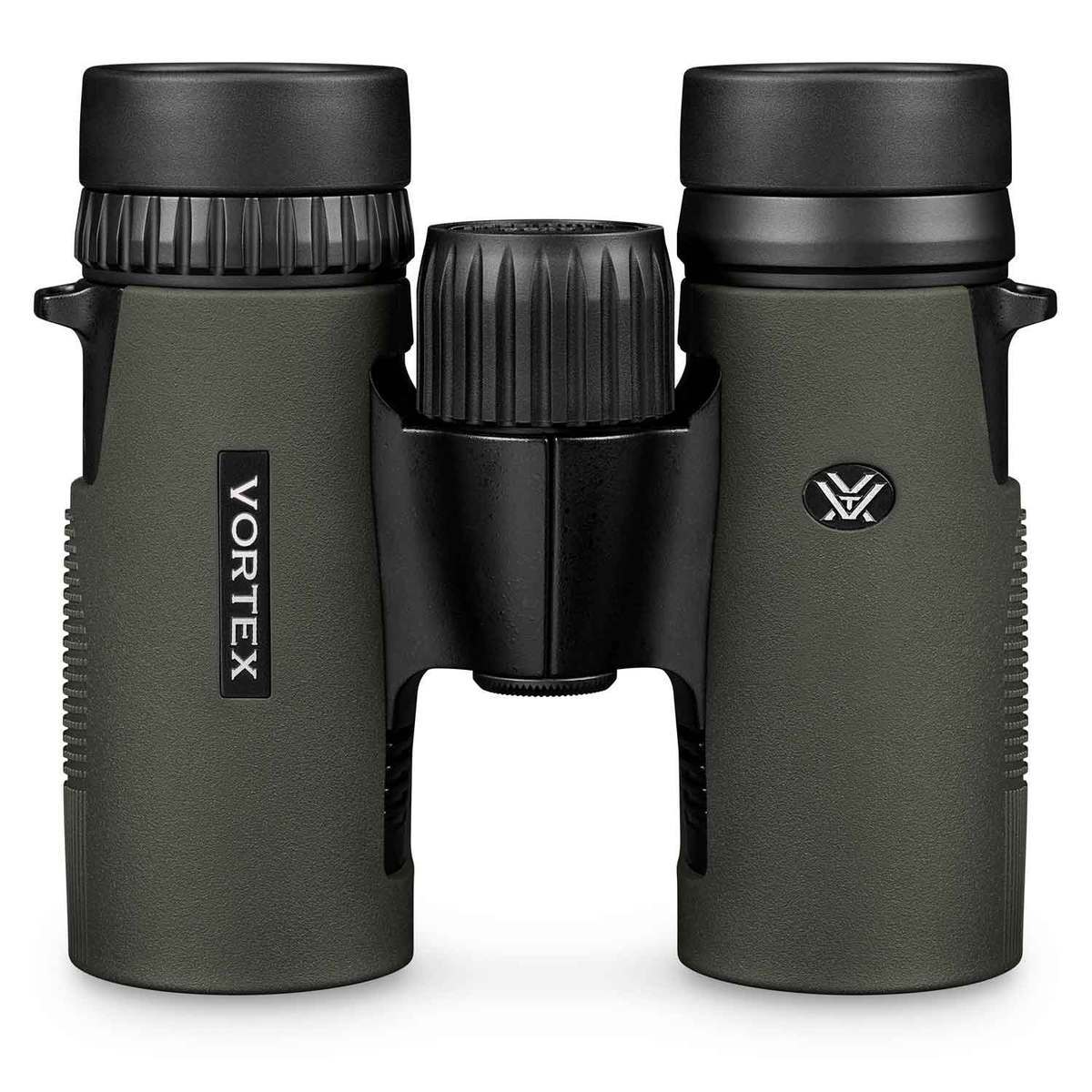By Heather Madsen
Binoculars are a vital piece of equipment for many outdoor activities, and buying your first pair can seem like a daunting task. Fortunately, our team at Sportsman’s Warehouse has teamed up with Vortex Optics to provide you with all the information you need to succeed. Read on to learn the basic construction and terminology of binoculars, and how to choose a pair that will work best for you.
Terminology
First, let’s start with the different parts of binoculars, and what they’re called. The lens that is furthest away from your eye is known as the “objective lens.” The lens closest to your eye is called the “ocular lens.”
Most binoculars will also have “eye shields.” These are usually adjustable and help provide stability and keep ambient light from entering through the ocular lens, which can distort your view or cause a glare.
On the bridge of the binoculars there should be a center wheel, which is used to adjust focus. Modern binoculars can also have a “right eye diopter,” which is usually a wheel on the right ocular lens that also helps improve focus. More details on the diopter can be found further down in this article.
Magnification
 The main purpose of any optic is to magnify your view. So, when shopping for your own binoculars, knowing the magnification and power you’re looking for is a good place to start.
The main purpose of any optic is to magnify your view. So, when shopping for your own binoculars, knowing the magnification and power you’re looking for is a good place to start.
Generally, on the center focus of the binoculars, you're going to see a set of numbers. The first number represents the magnification power. For example, this Vortex Razor has the numbers 10x42. The “10” means that whatever object is in your view will be magnified to appear 10 times closer than what it actually is. If your binoculars have a range as the first set of numbers (ex: 10-22x50), that just means you have an adjustable range of magnification.
Lens Diameter
The second number represents how large that objective lens diameter is. For this Razor it’s “42,” which means its lens is 42 millimeters in diameter.
The larger the lens, the more light that can be let in. In bright conditions you can get away with a smaller lens, like a 28mm, but in dimmer conditions a larger lens will help keep your view bright and clear. For hunters, or people looking for multiple purpose binoculars, a 42mm to 50mm lens is a great middle option that will work well for most outdoor conditions.
Lens Quality
Magnification is only useful if you can actually see what is being magnified. That's why the quality of lens glass and its coating are also important. Every time light hits a lens, some of that light is reflected. Since you get the clearest picture when as much light as possible passes through the objective lens, most manufacturers will apply an anti-reflective coating to the eye pieces. Some manufacturers also use a phase-correction coating which helps prevent chromatic aberration, or in other words, colors overlapping and creating a blurry or halo-ed image.
If you’re shopping for a truly high-end performance pair of binoculars, you can also look for a pair with ED or HD glass. These lenses will give you a truer image, less reflection, and minimal chromatic aberration.
Personal Adjustments
Optics will work best if they’re set up for you specifically. Similar to zeroing in a scope, binoculars need to be optimized for your eyes. Unlike scopes however, binoculars require the use of both eyes. Since most people’s eyes don’t have the exact same focus or strength, the right eye diopter helps tune each lens to your eyes’ specific needs.
To tune your binoculars, start by covering the right lens, then look at an object on the horizon through the left eyepiece with your left eye. Using the center wheel, adjust the focus until you see a sharp picture.
Next, cover the left lens, and look at the same object with your right eye. This time, leave the center wheel alone, and instead use the right eye diopter to bring the object into focus.
Your binoculars are now set to your specific eye strength. This will help keep your eyes from getting fatigued, and make sure whatever you’re looking at through the binoculars is clear for both of your eyes.
You’ll also want to adjust your eye shields. You want your eye to be as close to the ocular lens as possible, because that will give you the biggest field of view, and the least amount of glare. Most people will have these cups twisted all the way up, so they can press it to their face, to provide stability and to block peripheral vision and light. However, if you wear glasses, you won’t be able to get your eyes as close, so you’ll want to twist those cups down, in order to make room for your glasses.
Designs
There are a couple different binocular designs. As an example for this article, the two most popular designs can be shown in the Vortex Raptors and the Vortex Diamondbacks.
As seen in these images, the Raptors (on the left) have a more traditional, older style, which means they'll usually cost less, but you’ll still get solid optical quality. They have a great field of depth and a slightly better 3-dimensional image. However, the ocular lens is offset, so they’re a little bulkier and with all the angles and connecting parts, they’re a little harder to keep waterproof. However, the width of the eye pieces are adjustable, which makes these a great choice if you’re sharing them with children, or someone of smaller stature.
the width of the eye pieces are adjustable, which makes these a great choice if you’re sharing them with children, or someone of smaller stature.
On the other hand, the Diamondback's (on the right) lenses are perfectly aligned, which make them sleeker and easier to seal and waterproof, while also having great optical performance. Their streamlined design also makes them easier to pack, and pull from their case while you’re out in the field.
Whichever pair you choose will depend on personal preference, price range, and comfortability for you.
Protection
Having a pair of waterproof binoculars is important if you’re ever going to be out in the rain or snow. Optics manufacturers usually use nitrogen or argon to “purge” the binoculars in order to prevent moisture, dust, and mold from seeping in. They’ll also use O-rings to seal the lenses so nothing can get in through those connections either. Most modern binoculars are purged, but the higher end models will often have extra coatings and/or seals to ensure the best protection. Vortex also coats their optics with rubber armor that helps you maintain a firm grip, and protects your binoculars, should you accidentally drop it or knock it against something.
However, it’s still good practice to take precaution with your binoculars, even if they’re coated and waterproofed. Check your binoculars for cracks or chips in the coating or rubber sealings. Keep your binoculars in a protective case when they’re not in use, and use a neck strap to keep them from accidentally being dropped.
Now that you know the basics of binoculars, you’re ready to go out and buy your own! If you have any questions, or would like a professional recommendation on which model would work best for you, visit us online at Sportsmans.com or at your local Sportsman’s Warehouse.


_small.jpg)